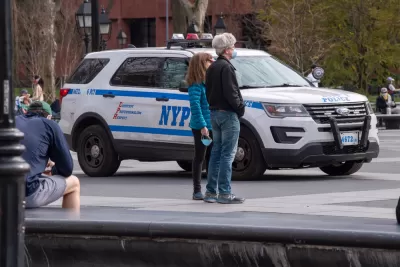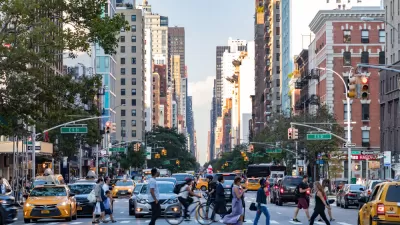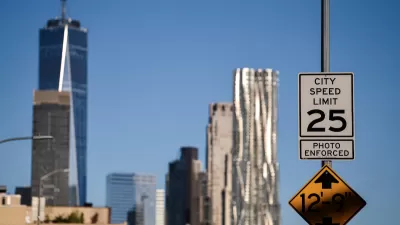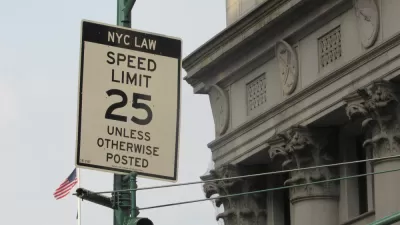With so few cars on the road, cars and buses are moving faster in New York City. Some drivers are going too fast, though.

Winnie Hu reports:
Traffic at New York City’s busiest bridges and tunnels has plunged nearly 60 percent.
Rush-hour speeds have soared 288 percent on one of the city’s most clogged arteries — the Brooklyn-Queens Expressway — to 52 miles per hour from 13 m.p.h.
According to Hu, the difference on New York City streets during coronavirus stay-at-home orders can also be measured in terms of bus speeds: "The average weekday bus speed rose 7 percent to 8.7 miles per hour from 8.1 miles per hour before the outbreak, according to the transportation authority."
While Hu applies the lessons of New York's current lack of traffic to inform the discussion about the congestion pricing plan proposed for parts of Manhattan, other media observers in the city are using the new conditions to raise awareness about traffic safety enforcement.
Gersh Kuntzman has been providing regular updates on the city's "speeding epidemic," including an article from April 5 reporting a 12 percent increase in speed violations issued by the city's speed cameras. "The 12-plus-percent increase in tickets come as the total number of vehicle miles traveled in the five boroughs is down by 71 percent from that same January baseline, according to data from StreetLight." Kuntzman documented some of the speeding in a video shared on Vimeo.
They're Speeding! from Gersh on Vimeo.
A follow up article by Kuntzman from April 8 notes that New York Police Department officers wrote fewer speeding tickets in March, even as the city's cameras catch more violators: "In March, NYPD officers wrote 346 speeding tickets per day, down 36 percent since January. By comparison, speed cameras caught 13,533 scofflaws on the average day in March, up 20 percent from the January average."
FULL STORY: N.Y.’s Changed Streets: In One Spot, Traffic Speeds Are Up 288%

Montreal Mall to Become 6,000 Housing Units
Place Versailles will be transformed into a mixed-use complex over the next 25 years.

Planetizen Federal Action Tracker
A weekly monitor of how Trump’s orders and actions are impacting planners and planning in America.

California High-Speed Rail's Plan to Right Itself
The railroad's new CEO thinks he can get the project back on track. The stars will need to align this summer.

Tenant Advocates: Rent Gouging Rampant After LA Wildfires
The Rent Brigade says it's found evidence of thousands of likely instances of rent gouging. In some cases, the landlords accused of exploiting the fires had made campaign donations to those responsible for enforcement.

Seattle’s Upzoning Plan is Ambitious, Light on Details
The city passed a ‘bare-bones’ framework to comply with state housing laws that paves the way for more middle housing, but the debate over how and where to build is just getting started.

DOJ Seeks to End USDOT Affirmative Action Program
The Disadvantaged Business Enterprise Program encouraged contracting with minority- and women-owned businesses in the transportation sector, where these groups are vastly underrepresented.
Urban Design for Planners 1: Software Tools
This six-course series explores essential urban design concepts using open source software and equips planners with the tools they need to participate fully in the urban design process.
Planning for Universal Design
Learn the tools for implementing Universal Design in planning regulations.
City of Camden Redevelopment Agency
City of Astoria
Transportation Research & Education Center (TREC) at Portland State University
City of Camden Redevelopment Agency
Municipality of Princeton (NJ)
Regional Transportation Commission of Southern Nevada





























